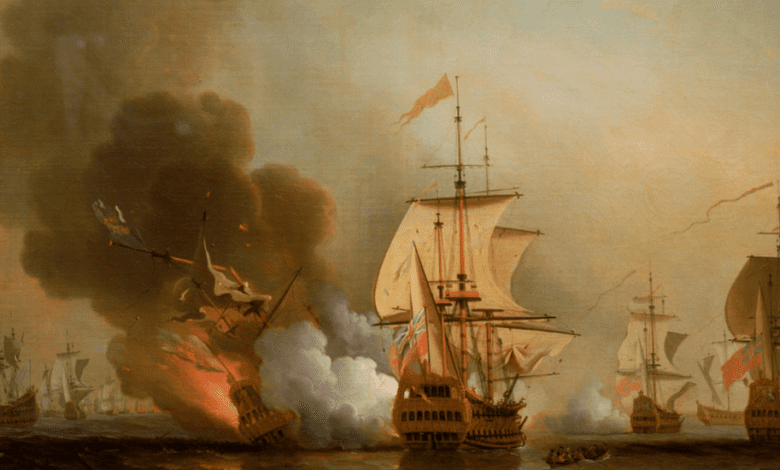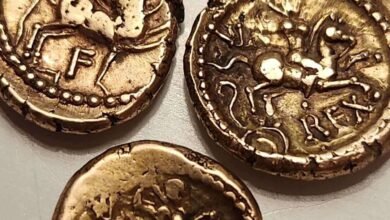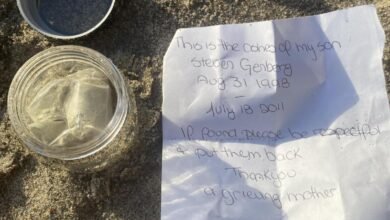Colombia wants to recover the treasure from the San Jose shipwreck

When the San José made its final voyage from Seville, Spain to America in 1706, the Spanish galleon was considered one of the most complex machines ever built.
But in an instant, the armed cargo ship went from a brilliant example of nautical architecture to what treasure hunters would consider the Holy Grail of shipwrecks. Destroyed in an ambush by the British in what became known as Wager’s Action in 1708, the San José sank off the coast of Cartagena, Colombia, with a cargo of gold, jewels and other goods that could be worth over $20 billion today.
Some experts say the number is greatly inflated. But the myth surrounding San José has led the Colombian government to keep the exact location secret for national security reasons.
Now Colombia’s President Gustavo Petro wants to move forward with a plan to bring the ship and its contents to the surface – and everyone wants a piece of it. It is the latest maneuver in a decades-long drama pitting treasure hunters, historians and the Colombian government against each other.
Mr Petro has directed the Culture Ministry to establish a public-private partnership to salvage the ship, with the aim of bringing at least part of the vessel to shore by the end of his first term in 2026.
Culture Minister Juan David Correa said in an interview that the government plans to launch a tender process in three to four months. He said the government is also considering building a museum and laboratory to study and display the ship’s contents. Bloomberg previously reported the plan’s renewed urgency.
“We need to stop looking at this as a treasure. “It’s not a treasure in the 19th century sense,” Mr. Correa said. “This is a lost archaeological heritage and is of cultural and critical importance to Colombia.”
But more than 300 years after the ship sank, the plan to bring the San José to the surface is fraught with conflict.
Archaeologists and historians have condemned the effort, arguing that disrupting the ship would do more harm than good. Several parties, including Colombia and Spain, have laid claim to San José and its contents. Indigenous groups and local descendants of Afro-Caribbean communities claim they are entitled to reparations because their ancestors mined the treasure.
Perhaps the largest and most lasting conflict lies in the hands of an international arbitrator in London.
The matter has been mired in litigation since 1981, when a search group called Glocca Morra claimed to have found the San José. According to court documents, the group turned over the coordinates to the Colombian government with the understanding that they were entitled to half of the treasure.
According to court documents, items included were made of wood. Carbon dating showed the wood was probably 300 years old.
With Colombia’s changing laws, Glocca Morra will have to defend its right to the treasure for decades. The conflict intensified in 2015 when the Colombian government said it had found the shipwreck in a different location that Glocca Morra’s new owners, Sea Search Armada, claim was just one to two miles from their own coordinates removed.
Sea Search Armada, a group of American investors, is challenging a 2020 law change that “unilaterally converted everything on the ship into state property,” Rahim Moloo, a lawyer representing the group, said in a statement. If Colombia wants to “keep everything on the San Jose for itself,” he said, “it can do that, but it has to compensate our customers for finding it in the first place.”
The group is asking for treasure worth an estimated $10 billion.
What exactly lies beneath is still a mystery.
To find clues, historians are looking for the San José’s sister ship, the San Joaquín, which was sailing alongside the San José when it sank. The San Joaquín traveled from Peru to Spain with, among other things, around 17 tons of coins.
“We don’t know how the material survives in water for three centuries,” Culture Minister Correa said, adding that the government would first examine some pieces before proceeding with full excavation.
“They are pieces of great cultural significance that can give us insight into our colonial past,” he said. “We will do it as quickly as possible by order of the president, but also as professionally and technically as possible.”
Because the shipwreck lies so deep, at least several hundred meters below the surface, “human life cannot get there,” Correa said. Any type of recovery would require underwater submersibles or robotics.
But Ricardo Borrero, a nautical archaeologist in Bogotá who has written a forthcoming paper on the San José, said any kind of disturbance would be “ill-advised” and intrusive and carry more risk than benefit.
“The shipwreck is there because it has reached equilibrium with the environment,” he said. “Materials have been in these conditions for 300 years and there is no better way for them to rest.”
Mr. Borrero said a study of the San Jose’s route, an estimate of its speed and barometric maps of the area suggested the ship was somewhere between 200 and 700 meters below the surface. But images taken during various government dives show life in the wreckage, including fish, suggesting that light can penetrate to a depth where photosynthesis can occur.
“Life is a hint that it is not as deep as they say,” he said.
Mr. Borrero said estimates that the treasure was worth up to $20 billion were questionable and that its value had been “exaggerated.” Historical documents on the San Joaquín, for example, show that she had “significantly fewer” goods on board, Mr. Borrero said, on the order of about a tenth of the San José’s estimated value.
Instead of moving the ship, Mr. Borrero said, the San José should be left intact on the ocean floor, where it would offer researchers the opportunity to study a prime example of globalization.
“Shipwrecks are the best way to tell us about the production, accumulation and distribution of goods in the past. “It’s like a floating city,” he said, noting that testing can shed light on how people navigated the seas, right down to the cut of meat they preferred. “You are able to reconstruct the history of world trade.”



